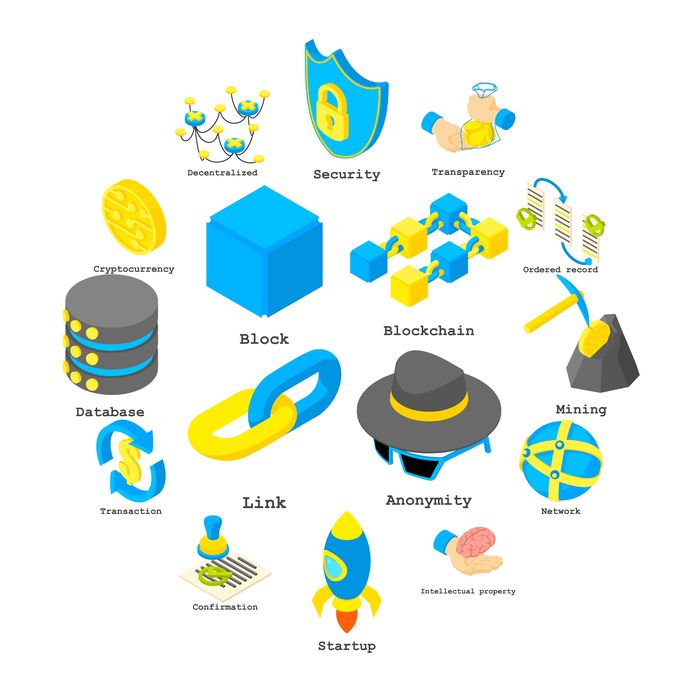Article By Toufi Saliba & Forbes Technology Council
Blockchain has yet to go mainstream, which isn’t at all surprising. However, maybe this can be changed because the promises of the blockchain are too good to pass on.There are thousands of blockchain projects in the world today, and while it can be difficult to tell which ones are capable of long-term success, it is possible because you can assess whether they are missing necessary elements in their current design (and many are).In security, there is a saying: “You are as strong as your weakest link.”
Decentralization is, in fact, a security model, but possessing 99 elements of decentralization is insufficient if only one remains centralized. It is the weakest point, and the strength of the 99 others does not matter. This is especially true if that “one” is the individual or group that is building the technology. If that is the case, simply running a trusted, old-school, centralized service like a database can actually be more efficient, confidential and scalable.
A mechanism to avoid concentration-of-power effects can help to ensure that the cost of any attack outweighs its possible benefits. Geographic distribution by design and stateless architecture are some of the most basic ideals that make blockchain attractive at all.
True veterans of blockchain aren’t moved by the hype, and they aren’t going to distort the truth about aspects of the technology despite the potential monetary gains of doing so — not at the expense of their reputation, dignity and raison d’être. While these folks may play the game, ultimately, true decentralization will be achieved, and this truth will become clear to all. The promises of blockchain will come to life, but not without the current technology’s foundational elements.
I believe there are five criteria that should be met. Each one is necessary, but in order to make sure your blockchain project is a success, other elements such as community, PR, distribution and marketing should factor into the equation as well. I will aim to cover these in more detail in future posts. For now, we are discussing the technical necessities that every blockchain project should abide by. All five should be met or your project is likely doomed to hit a wall.
The five criteria that we used for our own blockchain-based network protocol are as follows and can be remembered easily as S.E.C.S.I., which stands for security, efficiency, confidentiality, scalability and interoperability:
Security: Decentralization is a security model that features a Byzantine fault tolerance (BFT) so malicious colluding devices can’t take over the system unless their cost is higher than the benefit.
Efficiency: This is a relative term. However, what is most important to acknowledge is the amount of value that can be lost when a blockchain is inefficient. In many instances, the value that is extracted is greater than the value of the transaction. This is both unsustainable and wasteful. Revolutionary technology should offer at least 99% more efficiency than prior technologies (e.g., email vs. snail mail).
Confidentiality: If a system isn’t confidential by design, it will then need to deploy layers on top of it to make it confidential, which will end up affecting the efficiency. If, however, the confidentiality is built in by design, then the cost is embedded in the crypto-economic model of the system accordingly.
Scalability: This is one of the most well-known obstacles that many projects are facing, although many don’t recognize it until it is too late. What works for a prototype currently does not work for a business, so it is important that you consider this before aiming to develop any project and having a plan for the future beyond proof of concept.
Interoperability: If information cannot be transferred between two or more blockchains without an intermediary, it is not interoperable, which opens the door to a host of issues when the project is deployed en masse, from inefficiencies to security flaws and more.
Hyping Scale
It’s important to note that without security, efficiency and confidentiality, you wouldn’t even want your blockchain project to scale. Current fees barely scratch the surface. Fees in Ethereum as expressed in gas, for example, are not the true cost. In fact “gas” distorts and hides this true cost.
Bitcoin is, so far, the only revolutionary innovation created on blockchain. Yet an exploitation on the Bitcoin protocol started over six years ago, specifically on Hashcash (current PoW) to process much more hashing than regular machines. Now it’s known as an industry called “mining.”
This exploitation was not anticipated in the initial design and has since lowered the expectation bar drastically. We don’t expect any machine to get paid for not doing any work, but perhaps this work will eventually and evenly be distributed among all current 20 million users.
Although your blockchain project may not be as ambitious as Bitcoin, it’s important to remember the criteria presented here to unlock the full potential of blockchain.
Credits: Hot Crypto News,
https://blockchain4sdg.com/how-will-blockchain-dominate-technology/





